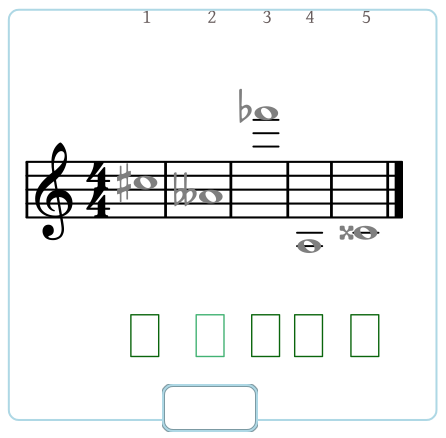Table Of Contents
Typing Pitches in the Theory Line
Here is an example of what pitches look like when they are engraved in the theory line:
To enter a pitch, click on the theory line entry and type in text that includes the pitch's pitch class letter name and octave number.
Pitch Class
The pitch class is the name of the pitch without its octave designation. It consists of a lower- or upper-case pitch letter C D E F G A B followed by an optional accidental: sharp, flat, natural, double-sharp or double-flat.
pitch letters: text input: C C, c D D, d E E, e F F, f G G, g A A, a B B, b
accidentals: text input: sharp #, s flat b, f natural n double-sharp ##, ss double-flat bb, ff
- For a pitch letter, type a lower- or upper-case C D E F G A or B.
- For a sharp, type the symbol '#' or a lower- or upper-case 's'.
- For a flat, type the lower-case letter 'b' or a lower- or upper-case 'f'.
- For a natural, type a lower- or upper-case 'n'.
- For a double-sharp, type the symbols '##' or the lower- or upper-case 'ss'.
- For a double-flat, type the lower-case letters 'bb' or a lower- or upper-case 'ff'.
Octave Number
The octave number is the octave in which the pitch belongs. Note that a pitch must have its octave number else it is not a pitch, but a pitch class. The lowest pitch on the piano is A0 and the highest pitch is C8. Middle-C on a grand staff is C4. Octave 4 begins with Middle-C octave and includes all the pitches up to the next C, which is the first note of octave 5. Octave 3 is the octave directly below Middle-C, and so on, as shown in this example:
Typing in the Theory Line
To type pitches in a pitch or clef assignment do the following:
- Click on an entry box to open the theory line editor just beneath the theory line.

- Type the pitch (pitch class and octave) as described above into the theory line editor. As you type, your input will be engraved in the theory line in proper music notation.

- When you are finished typing, press Return or use the Tab key to move to the next entry in the theory line.


